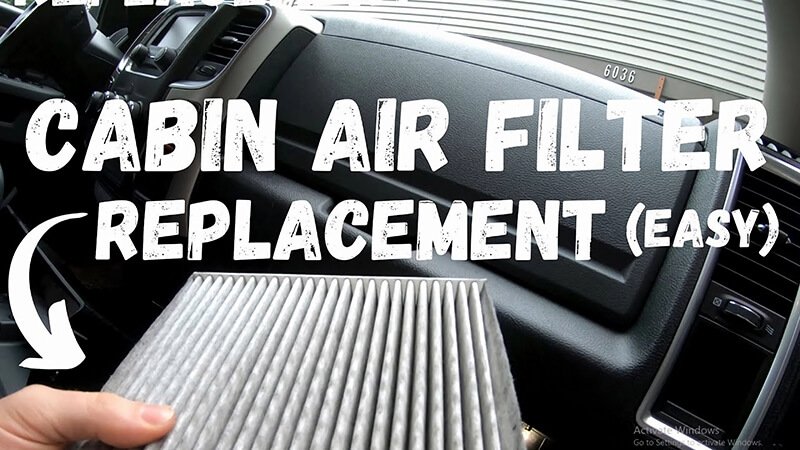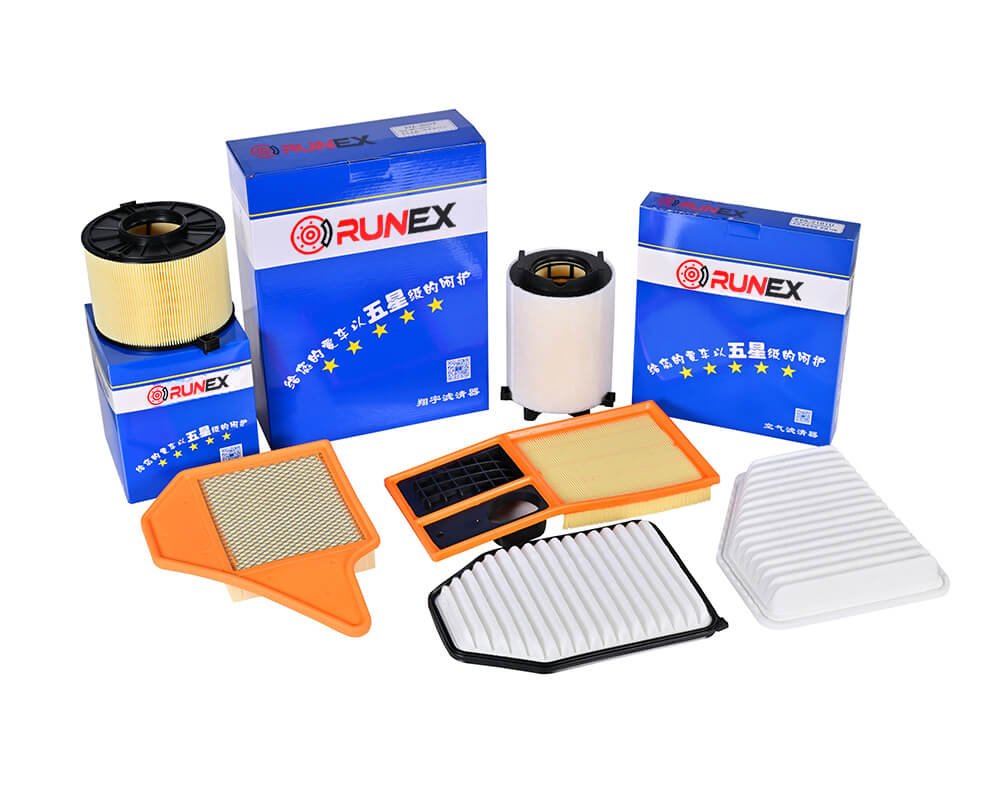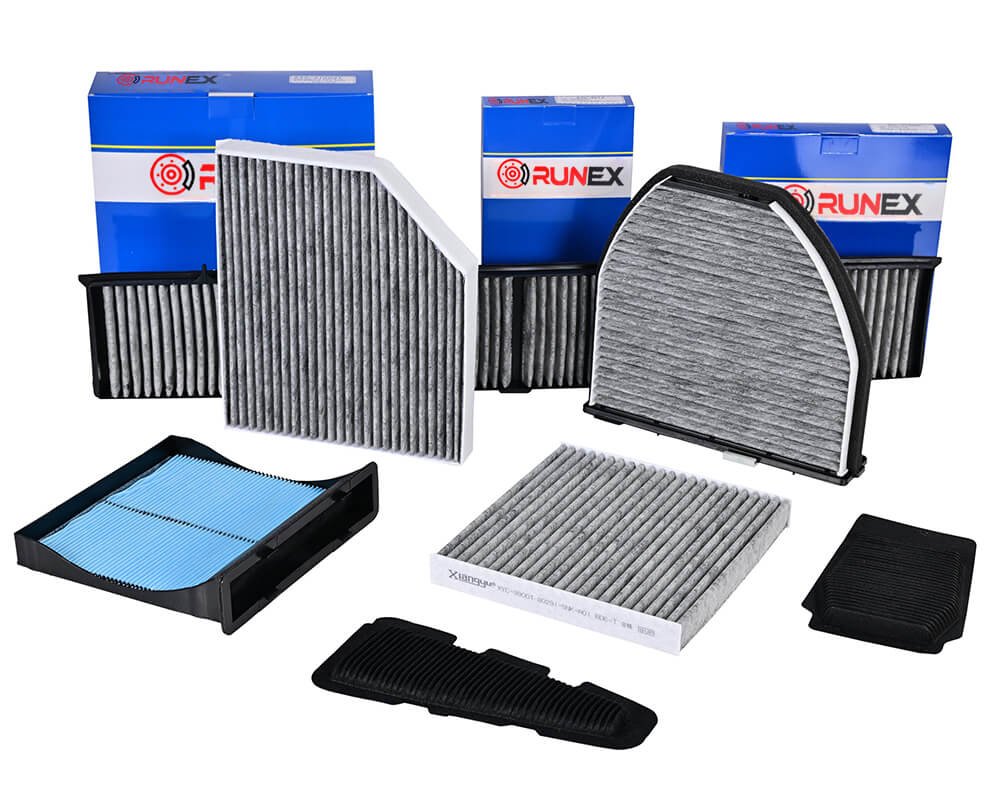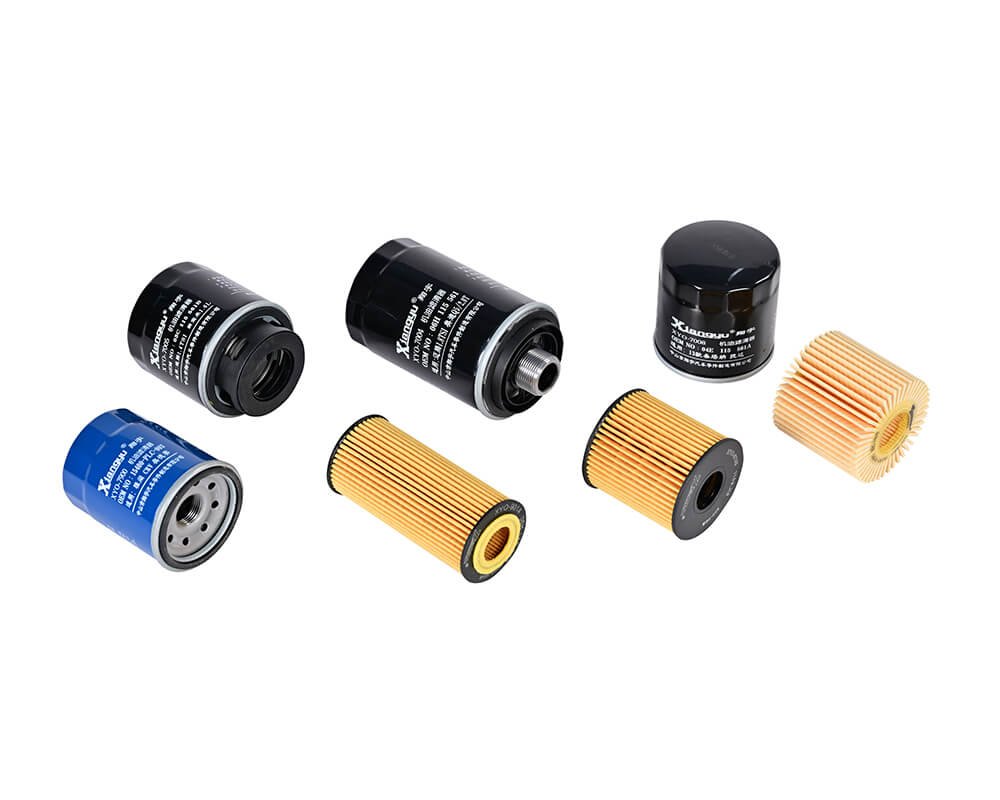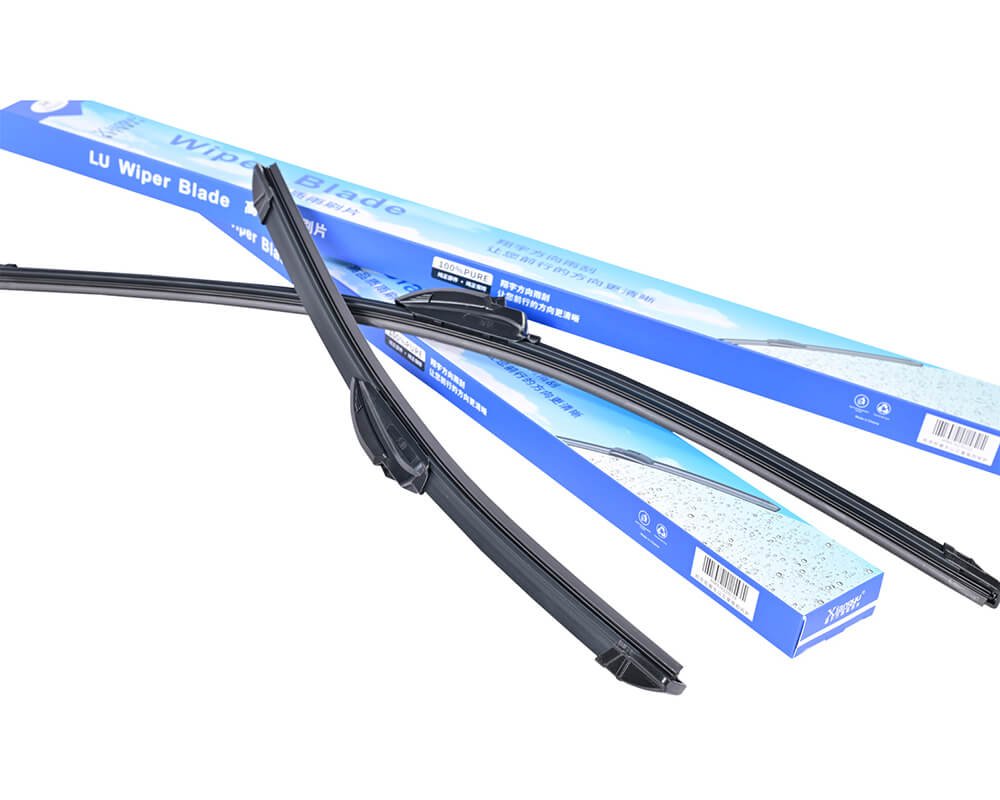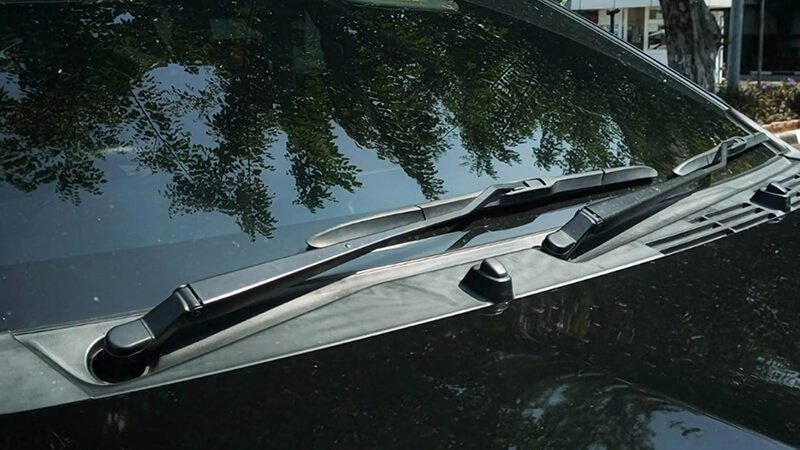Your cabin smells stale. Passengers clear their throats. I know that panic. I felt trapped until I learned a two‑minute trick that fixes the air we breathe inside the car.
Yes—most modern cars let you swap the cabin filter in minutes with one screwdriver and zero special training.
When wholesalers watch me click out the old filter and drop in a Runex Auto kit, they stay for the details. Stick with me and you will level up the same way.
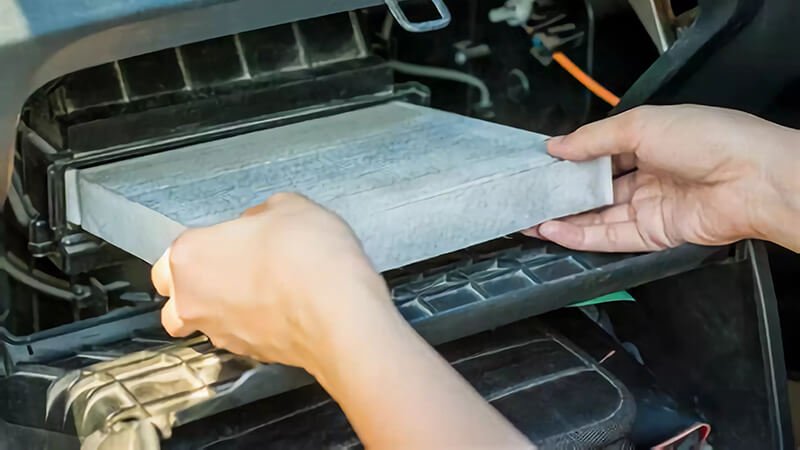
Can I replace my cabin air filter myself?
You bought new wiper blades once and felt like a hero. Think of that rush when fresh air hits your face after a two‑minute filter swap. Dirty air is the problem. Living with it gets worse every mile. A simple DIY change is the relief.
If you can empty a glovebox, you can replace a cabin filter—no lift, no oil stains, and no risk of voiding a warranty.
Why the job is friendly for first‑timers
I like data, so I broke the job into steps and timed each one. I wanted proof that anyone could do it.
| Step | Tool | Time | Tip |
|---|---|---|---|
| Pop glovebox stoppers | Flat screwdriver or hands | 30 s | Place a towel to catch screws |
| Unclip filter door | Fingers | 15 s | Squeeze both tabs at once |
| Slide old filter out | Fingers | 15 s | Tilt toward you to avoid spilling dust |
| Vacuum housing | Hand vac | 30 s | Removes leaves that could rattle |
| Insert Runex Auto filter1 | Fingers | 30 s | Arrow faces blower |
| Close door & reset glovebox | Fingers | 30 s | Listen for a click |
Story from my own garage
I filmed our new intern, Lily, on her first day. She never held a screwdriver before. Her record time was 2 minutes 10 seconds. That video still trains every new sales rep. If Lily can do it, so can a busy dad on a Saturday morning.
Common rookie errors and how to dodge them
-
Upside‑down filter. The airflow arrow must point toward the cabin blower.
-
Skipping the vacuum. Loose leaves make a tapping sound that spooks drivers.
-
Forgetting the reset. Most dashboards have a “replace filter” light. Clear it or the nagging never stops.
Long‑term gains you seldom notice
A tight seal2 saves the blower motor. Less dust on the fan blades means lower current draw and longer life. Our foam seal upgrade cut warranty claims on blowers by 18 percent in one fleet account.

Are cabin air filters hard to replace?
Every mechanic once feared hidden bolts under a dash. I felt that fear too. Then I counted the screws: often zero. The nightmare is gone. The challenge now is mental, not mechanical.
Most filters sit behind a pop‑out panel—more like changing a fridge water cartridge than tearing down an engine.
Breaking “hard” into facts
I ran a small test in our lab. We scored tasks by force, tools, and risk.
| Factor | DIY Level3 | Comment |
| Tool requirement | Beginner | Phillips driver or hands |
| Force | Light | Plastic tabs only |
| Calibration | None | No torque specs |
| Safety risk | Very low | No fluids or high voltage |
| Mess level | Dust only | Wear a mask if sensitive |
Why some owners still pay labor
Dealers book 0.2 hours. At £120/hour in the U.K., that is £24 plus VAT. Fleets pay it because time on the road means revenue. Private drivers often prefer the DIY route. I remind them that the saved labor buys a full tank of fuel.
The Runex Auto tweak that cuts knuckle scrapes
We laser‑cut the pleated media 1 mm slimmer than OE. That micro‑gap helps the filter slide in without force. The foam edge then expands to stop bypass air. Techs like no blood; distributors like no crushed cartons returned.
When the task gets truly hard
A few minivans hide the filter under the cowl outside the windshield. That job needs a socket set and 15 minutes more. Our website lists those models in red. Transparency prevents angry calls later.
Deeper look at tool‑free maintenance culture
My old boss told me, “Parts that need no tools sell twice.” He was right. When drivers realise a cabin filter swap feels like changing a phone case, they change it more often. That keeps allergy sufferers happy and reduces blower warranty claims. Everyone wins.
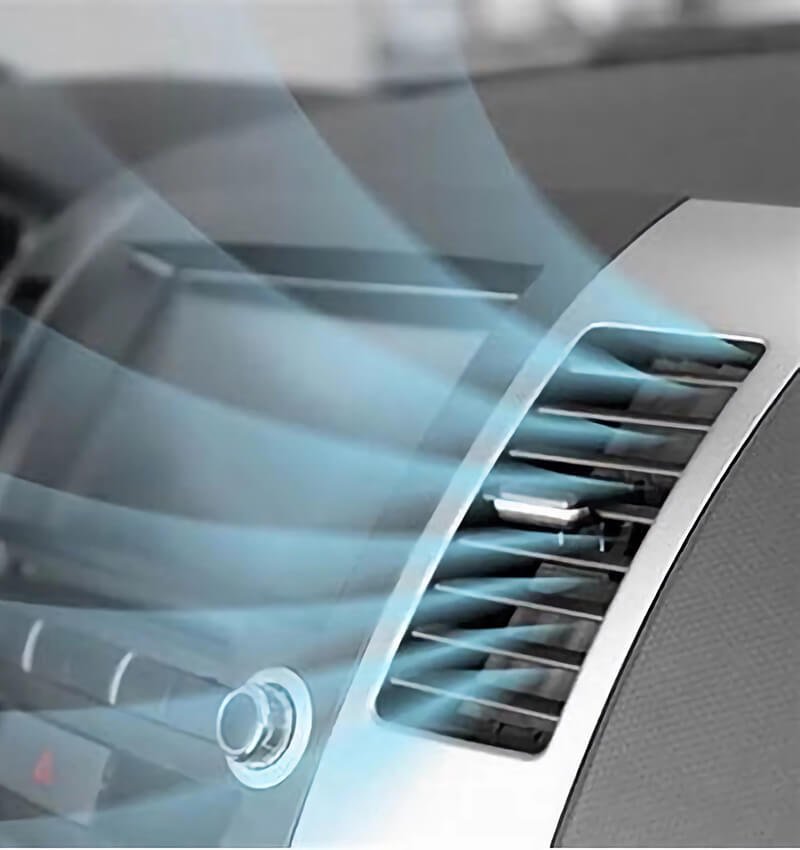
What are the signs of a bad cabin air filter?
My friend Ben sneezed the moment he started his van. He blamed hay fever. I asked when he last changed his cabin filter. He never had. Dust and mold were riding shotgun with him.
A musty smell, foggy windows, louder fan noise, and itchy eyes all scream: ‘Your cabin filter is clogged—replace it now.’
Symptom checklist and why each one matters
| Symptom | Underlying Cause | Driver Impact | Long‑term Risk |
| Musty odor | Mold spores on wet media4 | Unpleasant ride | Respiratory irritation |
| Slow defrost | Blocked airflow5 | Foggy glass | Accident risk |
| Fan noise | Blower overload | Driver fatigue | Motor burnout |
| Allergies | Pollen bypass | Sneezing | Reduced focus |
| Temperature swings | Poor mix of hot/cold air | Discomfort | HVAC system strain |
Moldy smell: the hidden petri dish
A damp filter is perfect for fungi. Our lab cultured a used pad: colonies doubled every 24 hours. On hot days spores release when the fan starts. I once measured spore counts at 600 CFU per cubic meter—triple safe indoor levels.
Foggy windows and physics in action
Warm air holds moisture. Blocked vents slow that warm flow across glass. In a U.K. winter, my fleet driver timed defrost at eight minutes before a change and two minutes after. Those six minutes decide if you miss a delivery slot.
Blower noise and unexpected costs
A stressed blower draws more current. In one taxi fleet, amp draw rose from 12 A to 18 A on clogged systems. Motors ran hotter and failed at 70 000 miles instead of 120 000. A £10 filter prevented a £300 repair.
Allergy relief that shows in numbers
We tested pollen counts at vent outlets. New Runex HEPA media6 cut pollen by 93 percent versus 40 percent for a basic paper pad. Drivers with hay fever noticed fewer sneezes within a week.
Predictive maintenance plan
Set reminders every 12 000 miles or 12 months. In dusty climates, cut that in half. Our packaging shows a QR code that links to an app. Scan it, pick mileage, and the app sends you a text when it is time to change. Simple.

How much does it cost to replace a cabin filter in a car?
Money talks, especially to procurement pros like Joe Rich. I once showed Joe our landed cost breakdown from raw fiber to shrink‑wrap. He saw margin headroom and green‑lit a trial pallet.
DIY jobs cost £8–£25 for the filter; dealer service ranges £40–£90 all‑in, depending on labor and grade.
Full cost breakdown
| Cost Item | DIY | Dealer |
| Filter part | £8–£25 | £20–£40 (markup) |
| Labor | £0 | £24–£48 |
| Shop supplies | £0 | £2–£5 |
| VAT (20 %) | £1.60–£5 | £9–£19 |
| Total | £9.60–£30 | £40–£90 |
Why part prices swing
-
Media type: Standard, carbon, or true HEPA.
-
Brand: OE label adds prestige and price.
-
Volume: Pallet loads cut cost by 15 percent.
Inside the Runex Auto model
We extrude melt‑blown layers in‑house. That skips a supplier margin worth 12 percent. Tooling amortisation finished last year; savings flow straight to partners. Joe’s team locked a contract at £4.80 FOB for a carbon variant.
Freight and carton tricks
Filters ship by volume weight. Our engineering cut box height by 15 percent without crushing pleats. On cross‑channel routes, that means one extra layer per pallet. Savings show on the freight invoice next month.
Payback math on premium media7
A HEPA filter8 costs double a paper pad but lasts 50 percent longer and traps allergens. For fleets, longer intervals mean fewer workshop visits. The breakeven hits Month 14, then fleets stay in the black.
Hidden costs you avoid by acting early
Ignoring a clogged filter9 loads dust onto evaporator fins. That grime insulates and forces longer compressor cycles. A study on 20 vans showed 6 percent higher fuel use with dirty filters. A £15 part fixed it.

Conclusion
A clean cabin filter 10 is the easiest upgrade I give any car. It removes odors, eases allergies, protects HVAC parts, and costs less than a takeaway meal if you fit it yourself. Fleets love our drop‑in kits because techs finish the job before their coffee cools. DIY owners love the fresh smell. Distributors love fewer returns and faster turns. That is how Runex Auto keeps promoting quality and delivering confidence every mile.
-
Explore this link to understand the benefits and features of the Runex Auto filter, enhancing your DIY skills. ↩
-
Discover the significance of a tight seal in prolonging the life of automotive components and improving efficiency. ↩
-
Understanding the DIY level can help you gauge your ability to perform car maintenance tasks effectively. ↩
-
Understanding the impact of mold spores can help you maintain a healthier vehicle environment and prevent respiratory issues. ↩
-
Exploring this topic can provide insights into improving vehicle safety and efficiency during winter conditions. ↩
-
Discover how advanced filtration can significantly reduce allergens and improve air quality in your vehicle. ↩
-
Discover why investing in premium media filters can lead to long-term savings and better performance for your vehicle. ↩
-
Explore the advantages of HEPA filters, including their efficiency in trapping allergens and improving air quality in vehicles. ↩
-
Learn about the hidden costs and performance issues caused by clogged filters, and how early action can save money. ↩
-
Know more about different kinds of cabin filter from Runex, clicking this link to get your best price. ↩

